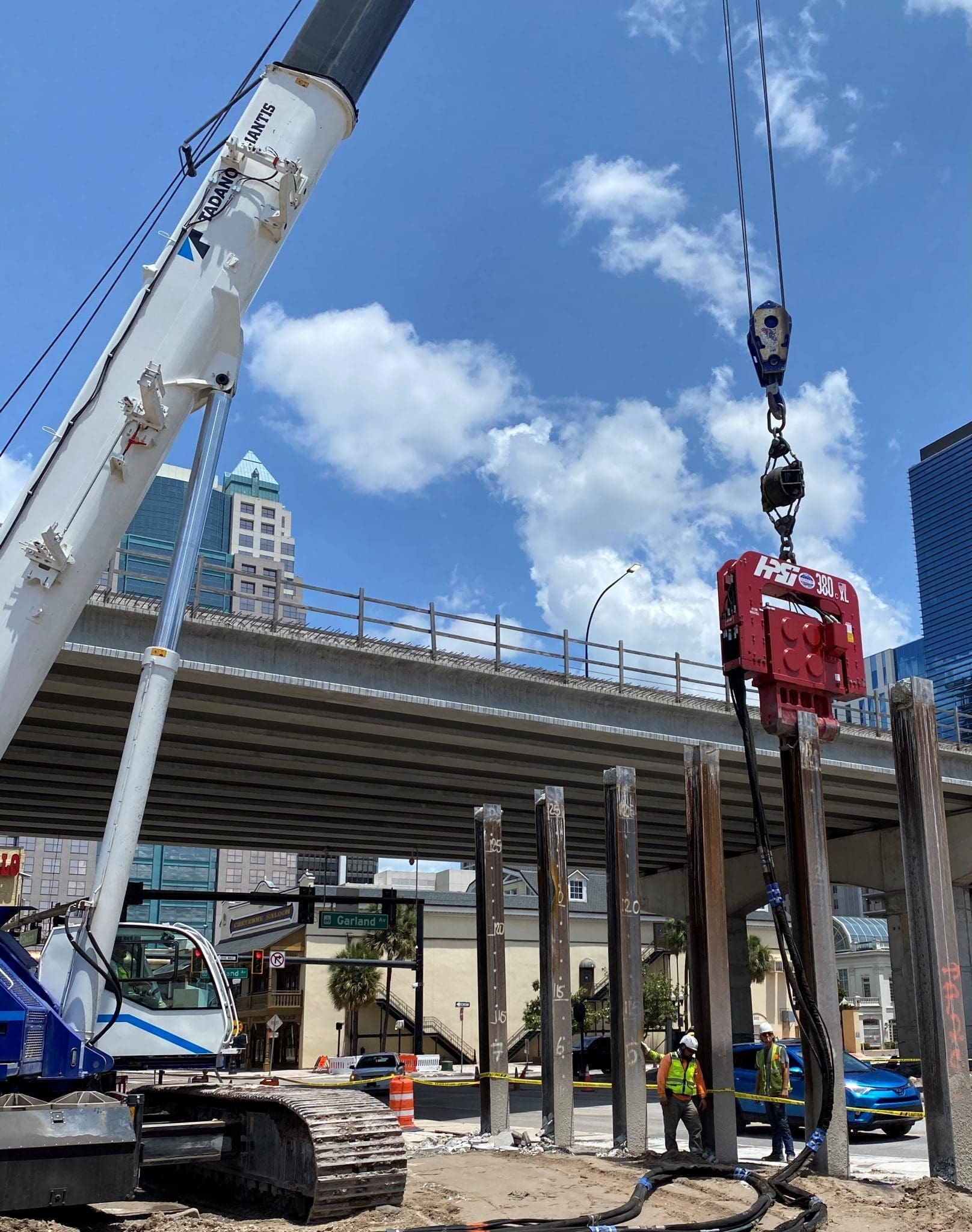In the world of construction and infrastructure development, having the right tools can make the difference between success and failure. One tool that is widely trusted by contractors is the vibrating hammer. It is used for driving piles into the ground, making it an important machine for projects that require strong foundations, such as bridges, buildings, ports, and roads.
But with different types and models available, the question many contractors face is: how do you choose the right vibrating hammer for your project? This guide will explain everything you need to know in simple language so you can make the best decision.
What Is a Vibrating Hammer?
A vibrating hammer is a powerful machine designed to drive piles (large beams, tubes, or sheets) into the ground. Instead of using impact force, it works by producing vibrations. These vibrations reduce the friction between the pile and the soil, allowing the pile to sink smoothly into the ground with less resistance.
This makes a vibrating hammer a more efficient and often quieter solution compared to traditional impact hammers. It is widely used in construction sites where time, efficiency, and noise control matter.
Why Is the Vibrating Hammer Important?
Before choosing the right model, it is important to understand why the vibrating hammer is valued in construction projects:
- Efficiency – It drives piles faster than many traditional methods.
- Precision – Vibrations allow for smoother and straighter pile installation.
- Reduced Noise – Less noisy than impact hammers, making it suitable for urban areas.
- Lower Soil Disruption – Prevents unnecessary damage to surrounding soil.
- Durability – Built to handle heavy-duty projects and long-term use.
With these benefits, the vibrating hammer has become a must-have tool in modern construction.
Types of Vibrating Hammers
When choosing a vibrating hammer, knowing the different types is the first step. Each type is suited for specific kinds of projects.
- Electric Vibrating Hammer
- Runs on electricity.
- Best for projects that require precision and less noise.
- Often used in areas where fuel emissions must be avoided.
- Hydraulic Vibrating Hammer
- Runs on hydraulic power.
- Known for strong performance and reliability.
- Ideal for large-scale projects requiring heavy-duty pile driving.
- Diesel Vibrating Hammer
- Powered by diesel engines.
- Highly mobile and does not require electrical connections.
- Suitable for outdoor projects in remote locations.
- Excavator-Mounted Vibrating Hammer
- Attached to excavators for flexibility.
- Very useful in projects where space is limited.
- Combines the mobility of excavators with the power of a vibrating hammer.
Key Factors to Consider Before Buying or Renting a Vibrating Hammer
When you are choosing the right vibrating hammer for your project, think about these important factors:
1. Project Size and Type
Small construction projects may not require a very powerful machine, while large infrastructure projects will need heavy-duty vibrating hammers. Match the hammer size and power to the scale of your project.
2. Soil Conditions
Different soils react differently to vibrations. Loose sandy soil may need a lighter hammer, while dense clay or rocky soil may require stronger hydraulic or diesel-powered models.
3. Pile Type
The type of pile you are driving matters. Steel sheet piles, concrete piles, or tubular piles all require different levels of force. Make sure the vibrating hammer you choose is compatible with your pile material.
4. Noise Restrictions
In cities or residential areas, noise control is very important. In such cases, an electric or hydraulic vibrating hammer is the better option, as they operate more quietly than diesel models.
5. Budget and Cost
The cost of a vibrating hammer depends on size, power, and features. Renting may be the right option for short-term projects, while buying could be better for long-term, frequent use.
6. Mobility and Space
If your project is in a tight or hard-to-reach space, an excavator-mounted vibrating hammer might be the best choice. This gives you both mobility and flexibility.
Benefits of Choosing the Right Vibrating Hammer
When you select the right vibrating hammer for your needs, you gain several benefits:
- Time Savings – The right tool speeds up work and reduces delays.
- Cost Efficiency – Prevents overuse of fuel, energy, and manpower.
- Improved Safety – Designed to handle the job properly, reducing accidents.
- Better Results – Ensures piles are installed straight, secure, and strong.
- Long-Term Value – A well-chosen hammer lasts longer and requires less maintenance.
Maintenance Tips for Vibrating Hammers
Once you have chosen the right vibrating hammer, it is important to keep it in good condition. Regular maintenance ensures long-term performance. Here are some tips:
- Check hydraulic or electrical systems regularly.
- Inspect bolts, clamps, and joints before use.
- Clean the machine after every project to avoid dirt build-up.
- Replace worn-out parts quickly to prevent bigger damage.
- Store the hammer in a safe, dry place when not in use.
Common Mistakes to Avoid
Many contractors make mistakes when choosing or using a vibrating hammer. Avoid these:
- Choosing the wrong size for the project.
- Ignoring soil type and pile compatibility.
- Focusing only on price instead of performance.
- Skipping regular maintenance.
- Using a diesel model in areas with strict noise rules.
By avoiding these errors, you ensure smoother and more efficient operations.
Why Contractors Trust the Vibrating Hammer
Contractors trust the vibrating hammer because it combines power, precision, and reliability. Unlike traditional pile-driving methods, it works faster, causes less disruption, and meets modern construction demands. For projects big or small, choosing the right vibrating hammer is a decision that saves time, money, and effort while delivering strong foundations.
Conclusion
A vibrating hammer is more than just a tool; it is a key part of successful construction projects. From small urban jobs to large-scale infrastructure, having the right model ensures efficiency and reliability. By understanding the types, uses, and key factors, contractors can select the best vibrating hammer for their project needs.






